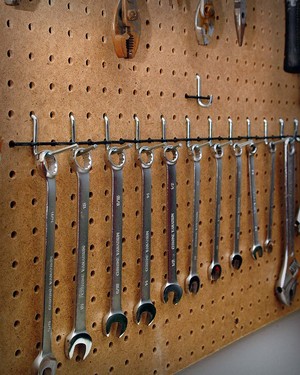Here’s the scenario. You walk into a place of business for the first time, to inquire about the possibility of having something built or repaired. You look around and see piles and piles of disorganized materials or parts. The counters are dusty, only half the light fixtures work, and the floor hasn’t been swept since Carter was president. Besides not wanting to breathe the air in the room, you are probably considering an immediate retreat, with plans to take your business elsewhere. Your gut feeling about the quality of work that is done in that mess is probably correct. Disorganization does not lend itself well to quality work, and therefore is not a part of the lean manufacturing process.
Lean manufacturing methods include what is referred to as a 5S system, designed to organize a work area, and keep it organized on a sustained basis. What does each S in the name “5S” stand for? We have to give credit to our Japanese friends, who have for many years been the pioneers in lean manufacturing processes. Each S stands for a different Japanese word of instruction which, when used in the correct sequence, will add efficiency by the creation of a tidy work station. This can be used in any facility. (I even used it for the work bench in my garage.) Let’s cover each S, and see how it can help.
1. Seiri for Lean Manufacturing (Sort). The first 5S step for lean manufacturing is to sort through all of the items that you have in the work area, and determine which ones should stay and which should be removed. This moving could include warehousing in another location, or pitching it in the trash. When I cleaned out the garage, I spent a lot of time determining if I really needed some items, such as that half-empty bottle of whitewall tire cleaner, or that broken extension cord that I was planning to re-splice. Many decisions were based on whether I had needed those items at any time in the past two years. If not, they went to the trash. All other “keeper’ items were temporarily stored on tables in an empty section of the garage, until I could arrange for a permanent location. The same process can be used in a manufacturing facility, and may require the temporary storage of some items and materials until the permanent placement is fully prepared. This sorting step also gives you the chance to properly label the items that you intend to keep.
2. Seiton for Lean Manufacturing (Set in Order). The second 5S step is to arrange the tools, fixtures, work-in-process, materials, parts, etc., in some sort of arrangement that provides for a good flow. In the example of my garage work bench, this included the hanging of a peg board, large enough to place all of the hand tools within easy reach, and having enough pegs to place the wrenches, hammers, and pliers in an order going from the largest to the smallest. In a facility planned for lean manufacturing, it might mean arranging work stations such that the hand-off of product from one station to the next is done conveniently. When this is done correctly, it can be easy to spot when something is out of place. For example, an empty hook on my peg board may indicate that the 9/16″ wrench is still in the back seat of the car, instead of hanging where it can be found at a moment’s notice the next time it is needed.
3. Seiso for Lean Manufacturing (Shine it up). The third 5S step for lean manufacturing is to make sure everything is kept clean and free of debris. Taking a little extra time to tidy up after a work day helps to make the following day a lot easier. Your finished product will be less likely to suffer from some type of contamination if the work area is routinely cleaned and dusted. The work bench in the garage is more effective if you aren’t concerned that whatever you are painting or staining isn’t going to come in contact with two-month old grease from your last car repair, or those metal shavings from when you had to grind that sheet metal to the right size.
4. Seikets for Lean Manufacturing (Standardize). The fourth 5S for lean manufacturing is for creating a system that will keep the organization under control. In a manufacturing facility, this may mean the development of a schedule where all of the tools are cleaned and calibrated on a regular basis, or for refilling any inventory items that will be needed during the next work session. In the workplace, this process often consists of completing logs or some similar type of paperwork, so that there is evidence that the established routine is being observed. In some cases, it may refer to the development of an employee handbook or a process standard that can be followed by anyone who goes to work for the company. Ever wonder why a McDonald’s hamburger tastes the same regardless of location? They have standardized their methods to the point that it’s cooked and dressed the same no matter which store is selling it.
5. Shitsuke for Lean Manufacturing (Sustain by review). After the first four steps are complete, there should be a constant check on whether the system is working, or if there are improvements that could be introduced without adding risk to the product. After using my new pegboard system in the garage for awhile, I may find out that the wrenches are better off at the far end, and the hammers are handier when they are closer to the bin of nails. A company practicing lean manufacturing may watch a new layout for a period of time, and then discover that the waste material created by some work station is a contamination problem for another station in close proximity.
Now, let’s re-visit the scenario first presented. A customer walking into a place of business where the organization of a 5S process is evident will likely have more confidence that good quality work is taking place there. Customer satisfaction and lean manufacturing methods often walk hand in hand.




